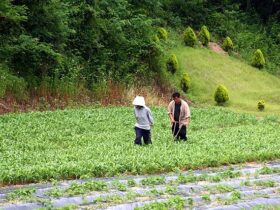2024 marks the tenth anniversary and the conclusion of the United Nations High Commissioner for Refugees (UNHCR) #IBelong Campaign, a decade-long push to resolve statelessness around the globe. Although statelessness can seem like a simple phenomenon, it is, in reality, a multifaceted issue due to the countless ways people can become stateless.
In the simplest use of the phrase, a “stateless person” is someone who is not recognized as a citizen by any country; however, the ways in which a person can become stateless are varied. One method is based on the legal principles of birth; some countries are based on jus soli, the right to citizenship when born in the country, while other countries are jus sanguinis, based on bloodline. As such, if a child comes from a country without jus sanguinis and is born in a country without jus soli, they would be stateless. While this principle causes people to be legally fully stateless (de jure), some people can also become effectively stateless despite having a claim to citizenship (de facto) as a result of discrimination or war. The de facto stateless people would normally have a right to citizenship, however, their government treats them as if they do not have the right or valid paperwork. As such, governments that actively deny their citizens citizenship render them stateless despite them potentially having proof of the contrary.
Stateless people face many issues as a result of their lack of official nationality. Arguably the biggest of the problems is a lack of legal documents. Without official papers and records, certain freedoms and rights are limited or even unobtainable, such as public education, healthcare, employment, marriage and many other rights. By not having access to those rights, stateless people are pushed into worse living conditions. This can lead to governments abusing their power over their stateless populations, causing or continuing the oppression of those people and trapping them in an inescapable loop of statelessness.
One of the most prominent examples of widespread statelessness can be seen among the people of Kurdistan, an unofficial nation split across Iran, Iraq, Turkey and Syria. Some Kurds, like the ones in Syria, are de jure stateless and possess no citizenship in the country despite being born within its borders. In comparison, Kurds in Turkey are more often de facto stateless – in other words, they have Turkish citizenship but are still treated as if they do not. In stark contrast to Syria and Turkey, the Kurdish people in Iran and Iraq are typically treated as Iranian and Iraqi citizens and therefore have access to state privileges like international travel and are not considered stateless. Another important thing to note about the issue of statelessness is that although being stateless and being undocumented are technically different things, they present similar challenges. As such, solving just one of these two global issues could lead to breakthroughs in the other.
Statelessness is a massive problem with no clear solution. In 2014, the UNHCR announced its #IBelong campaign, setting the goal to eradicate statelessness by 2024. Despite this sounding like a nearly impossible task, given that 3.5 million people out of an estimated 10 million stateless people were actually recorded stateless at the beginning of the initiative, the UNHCR established smaller, more tangible and realistic goals to see the initiative through. These goals, or “actions” (as titled by the UNHRC), mainly focused on taking steps to stabilize at-risk populations, such as women and minority ethnic groups, as well as lowering the risk associated with adopting or changing nationalities through obtaining legal documents. The #IBelong campaign also tackles some of the Sustainable Development Goals, specifically numbers five, ten, 16 and 17, which span issues from gender equality to strong institutions, further demonstrating how multifaceted the issue of statelessness really is.
The #IBelong campaign is also unique in that it complements the work of other UN bodies and non-governmental organizations (NGOs), leading to greater international collaboration. The United Nations International Children’s Emergency Fund (UNICEF) has been one of the strongest contributors to the campaign, working specifically to resolve the issue of statelessness due to its impact on children. One key example of UNHCR/UNICEF collaboration on the project involved the Royal Thai Government. In its direct endorsement of the #IBelong campaign, Thailand has vouched to establish jus soli for babies while also creating new pathways to grant both stateless adults and children citizenship. Through gaining Thai citizenship, formerly stateless people will gain the ability to access education, national protection and other services offered by the government. In the nine years that Thailand has been committed to the campaign, over 63,000 registered stateless people have obtained citizenship. In addition, the UNHCR, alongside the Adventist Development and Relief Agency (ADRA), helped over 50,000 stateless people gain assistance in Thailand. The original relationship established between the UNHCR and UNICEF through the #IBelong campaign has led to a more permanent partnership via the UNICEF-UNHCR Strategic Collaboration Framework, a framework to eliminate childhood statelessness by 2030.
Despite over 66 countries and 32 international organizations pledging their dedication to make statelessness a problem of the past, the UNHCR has yet to reach its 2024 goal for the #IBelong campaign. The responsibility for this failure rests not only with the UNHCR but also with the states whose genuine participation in the program could have made the #IBelong campaign more successful. Currently, only 34% of all UN-recognized states have made pledges to participate in the #IBelong campaign; however, with greater international support, more people could potentially obtain official citizenship, or at least be officially recorded as stateless.
Although this decade-long promise has yet to fully come to fruition, massive progress has already been made toward eliminating statelessness for good. Aside from the direct progress made by working with states and NGOs, other more subtle improvements have been made to reduce and reverse aspects of statelessness. Improved data regarding stateless people has become available during the past decade, allowing for more accurate statistics and planning. A greater number of campaign partners within the UN bodies has also helped bolster the project, as resources can be more easily pooled between a greater number of members, which, in turn, helps to increase global awareness about the issue at a faster pace. Additionally, one of the most important successes of the #IBelong campaign has arguably been the outreach generated by the project, which has helped to ensure that more people are even aware of the problem. Individual actions can help generate policy changes in more resistant countries, such as China and Brazil, from the bottom up, thereby further helping the UNHCR to gather more resources via an expanded support network.
Through the work of the #IBelong campaign, the UNHCR established a foundation for resolving statelessness, allowing for the creation of additional campaigns, projects and laws to further the cause. UNICEF-UNHCR Strategic Collaboration Framework and other partnerships represent an important step towards a more permanent effort to resolve statelessness, working in tandem with the UN Sustainable Development Goals to create that future. Although it did not fully accomplish its goals by 2024, hopefully, the spirit of the #IBelong campaign will continue to live on so that someday statelessness will be permanently eradicated.






